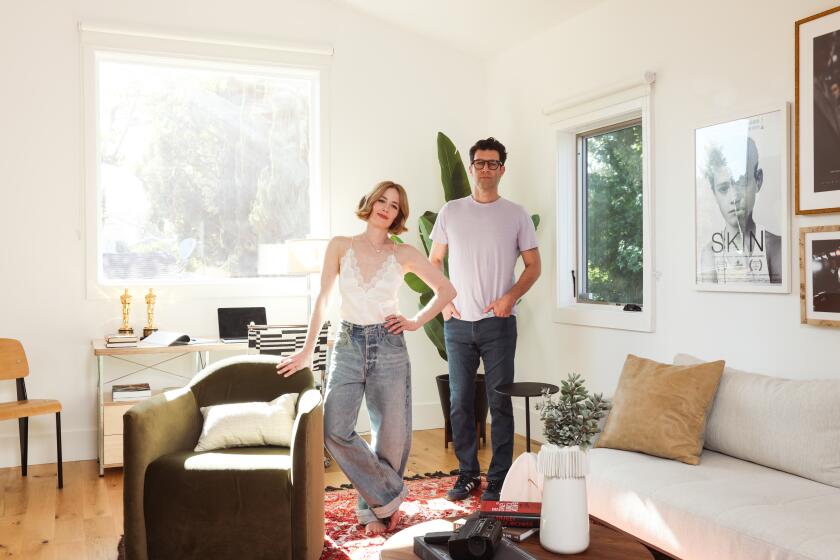Solid Foundations : Architect Needed to Build Trust Before Erecting Urban Cottages
Michael Anderson, 39, got a degree from Southern California Institute of Architecture in 1986. He worked for urban design and architectural firms around Southern California but always wanted to bring development to the economically depressed inner city. In 1990, he put together a real estate development plan for the Crenshaw district but soon found he had to earn trust from the grass roots up before his good intentions would go anywhere.
*
I started my own development company because I got frustrated constantly seeing politics thwart the projects I thought needed to be developed in the black community. I saw money being spent on studies that did not translate into economic revitalization.
When I worked in Orange County, my colleagues would always say that if they could get a black developer to do projects in urban areas, the community would be accepting.
I quickly found that that was not true. Just because I was black did not mean the community accepted me. They said, “We don’t know you--you’re not from this area.” People have been betrayed by their own color.
I felt that public improvements were key to successful residential and commercial developments in declining areas. I studied projects like the Third Street Promenade in Santa Monica and Brand Boulevard in Glendale.
I kept looking at the Crenshaw corridor and thought we could do the same thing there. But when I came up with a redesign project for Leimert Park, I was stopped in my tracks because the community had not come up with the plan. And when I lobbied to build a $14-million office building next to Crenshaw Plaza, I got high-level support, but the idea melted because there was not enough public pressure.
I learned you have to hang around long enough to establish trust and build a solid foundation. I began attending redevelopment meetings, community design meetings and local breakfasts. I befriended anybody focused on doing something positive. I felt like a kid going to a new high school because I went through all the things you’d go through to be accepted. Any time anyone raised an objection to me, I tried to meet with them personally.
I realized that I needed to start smaller and that the bureaucracy is more friendly developing housing. So I came up with an “urban cottage” project on an 18,000-square-foot parcel at Vernon and 5th avenues that had burned in the riots. I did six townhomes because I felt it had to be large enough to make an impact and start turning the block around.
Escrow is opening on one unit, and I have 36 interested buyers, even though the grand opening is not until Aug. 29.
I am currently working on a plan to rebuild the sidewalks and put 100 lighted date palm trees along Crenshaw Boulevard from Vernon Avenue to Rodeo Road. This will create a colonnade effect that I hope will be a prelude to a major change in the local image.
At Vernon and 7th avenues, I have a partnership that has acquired two vacant apartment buildings where crack heads used to hang out. We are remodeling them and reducing the number of units so we can make the apartments larger and move families into quality, long-term housing.
And for credibility, I plan to relocate my home office into one of those units so I can screen the tenants myself.
* MORE SMALL BUSINESS: D9
(BEGIN TEXT OF INFOBOX / INFOGRAPHIC)
AT A GLANCE
* Company: Anderson Development Co.
* Owner: Michael Anderson
* Nature of business: Architecture and real estate development
* Location: 6238 Mosley Ave., Los Angeles
* Founded: 1992
* Employees: 2
* Projected revenue: $1.1 million
Sign up for Essential California
The most important California stories and recommendations in your inbox every morning.
You may occasionally receive promotional content from the Los Angeles Times.



